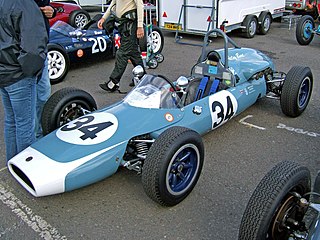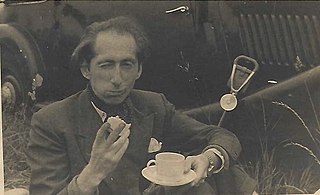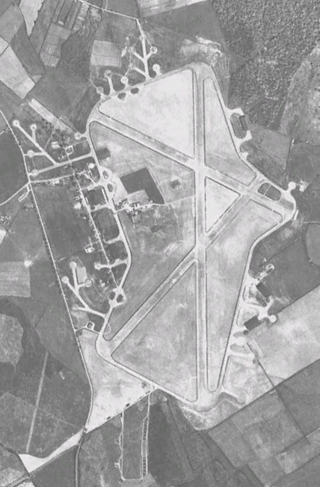
The British Grand Prix is a Grand Prix motor racing event organised in the United Kingdom by Motorsport UK. First held by the Royal Automobile Club (RAC) in 1926, the British Grand Prix has been held annually since 1948 and has been a round of the FIA Formula One World Championship every year since 1950. In 1952, following the transfer of the lease of the Silverstone Circuit to the British Racing Drivers' Club, the RAC delegated the organisation of races held at Silverstone to the BRDC, and those held at Aintree to the British Automobile Racing Club. This arrangement lasted until the RAC created the Motor Sports Association in the late 1970s and it reclaimed organising control of the event. The RAC MSA was renamed Motorsport UK in 2019 when it formally split from the RAC.

Silverstone Circuit is a motor racing circuit in England, near the Northamptonshire villages of Towcester, Silverstone and Whittlebury. It is the home of the British Grand Prix, which it first hosted as the 1948 British Grand Prix. The 1950 British Grand Prix at Silverstone was the first race in the newly created World Championship of Drivers. The race rotated between Silverstone, Aintree and Brands Hatch from 1955 to 1986, but settled permanently at the Silverstone track in 1987. The circuit also hosts the British round of the MotoGP series.

Derek Reginald Bell is a British racing driver. In sportscar racing, he won the Le Mans 24 hours five times, the Daytona 24 three times and the World Sportscar Championship twice. He also raced in Formula One for the Ferrari, Wheatcroft, McLaren, Surtees and Tecno teams. He has been described by fellow racer Hans-Joachim Stuck as one of the most liked drivers of his generation.

Reginald Parnell was a racing driver and team manager from Derby, England. He participated in seven Formula One World Championship Grands Prix, achieving one podium, and scoring a total of nine championship points.

Sydney Charles Houghton "Sammy" Davis was a British racing motorist, journalist, graphic artist and clubman.

Sir Henry Ralph Stanley Birkin, 3rd Baronet, known as Tim Birkin, was a British racing driver, one of the "Bentley Boys" of the 1920s.
The Automobile Club de l'Ouest, sometimes abbreviated to ACO, is the largest automotive group in France. It was founded in 1906 by car building and racing enthusiasts, and is most famous for being the organising entity behind the annual Le Mans 24 Hours race. The ACO also lobbies on behalf of French drivers on such issues as road building and maintenance, the availability of driving schools and road safety classes, and the incorporation of technical innovations into new vehicles. It also runs a roadside assistance service for its members.
The British Automobile Racing Club (BARC) is one of the biggest organising clubs for motor racing in the United Kingdom.

Patrick Peter Mitchell-Thomson, 2nd Baron Selsdon won the 1949 24 Hours of Le Mans together with Luigi Chinetti in a Ferrari 166 MM.

The International Trophy is a prize awarded annually by the British Racing Drivers' Club to the winner of a motor race held at the Silverstone Circuit, England. For many years it formed the premier non-championship Formula One event in Britain, alongside the Race of Champions at Brands Hatch.

John Francis Duff was a Canadian racing driver. He is best known for winning the 1924 24 Hours of Le Mans.

Francis Richard Henry Penn Curzon, 5th Earl Howe, styled as Viscount Curzon from 1900 to 1929, was a British naval officer, Member of Parliament, and racing driver and promoter. In the 1918 UK General Election he won the Battersea South seat as the candidate of the Conservative Party, which he held until 1929. While in Parliament he took up motor racing, and later won the 1931 24 Hours of Le Mans race. He ascended to the Peerage in 1929, succeeding his father as the 5th Earl Howe. Earl Howe co-founded the British Racing Drivers' Club with Dudley Benjafield in 1928, and served as its president until his death in 1964.

Motorsport is a popular sport in the United Kingdom. The United Kingdom is a key player in the world of motorsport, hosting rounds of the Formula One World Championship and Grand Prix motorcycle racing, amongst others. It is also the home of many of the current teams in Formula One, such as McLaren, Williams and Aston Martin, while teams such as Red Bull Racing, Mercedes, Alpine and Haas are also based in England. There are also a range of popular national series held such as the British Touring Car Championship and the British GT Championship amongst others. The Motor Sports Association is the official governing body of motorsport in the United Kingdom.

Patricia Mary "Patsy" Burt was a British motor racing driver.

Michael C. Chorlton was an English film editor and occasional director. He was born in Disley, Cheshire. He particularly worked with Powell and Pressburger, including editing The Silver Fleet and the motorcycle sequences for A Matter of Life and Death

MotorSport Vision (MSV) is a motorsport organisation and an operator of six UK venues. MSV has a portfolio ranging from major two and four-wheel championships to organising the PalmerSport corporate driving event.
Edward Ramsden Hall was an English racing driver. He was born in Milnsbridge into a wealthy Yorkshire family in 1900, the heir to a successful textiles business which funded his motor racing and other sporting exploits. He is famous for being the only driver to successfully complete the full 24 hours of the 24 Hours of Le Mans race solo, a feat he achieved in 1950. He lived at Kirkburton, near Huddersfield until leaving the United Kingdom on his retirement in the early 1950s to live, initially in South Africa, later in Canada and then Monte Carlo, where he had an apartment overlooking the harbour and part of the Grand Prix circuit. He was married twice, first to Evelyn Muriel and secondly in 1933 to divorcée Joan Evelyn Quarmby who survived him on his death in 1982.

Silverstone Circuit is built on the site of a World War II Royal Air Force bomber station, RAF Silverstone, which opened in 1943. The airfield's three runways, in classic WWII triangle format, lie within the outline of the present track. Since its first use in the 1940s, the circuit has undergone several changes.

Margaret Mabel Gladys Jennings was a Scottish motor racing driver. As Margaret Allan she was one of the leading British female racing and rally drivers in the inter-war years, and one of only four women ever to earn a 120 mph badge at the Brooklands circuit. During the war, Jennings worked as an ambulance driver and then at Bletchley Park's intelligence de-coding centre, and afterwards became a journalist and was Vogue magazine's motoring correspondent from 1948 to 1957.
The first British Grand Prix was held in 1926, however it was not until the fifth event, held in 1950, that a trophy was first awarded to the winner. The first trophy presented by the Royal Automobile Club was the Mervyn O'Gorman trophy, awarded from 1950 until the early 1970s, when it was replaced by the present gold Royal Automobile Club Trophy. The official, perpetual trophy is awarded to the winner of the British Grand Prix and then returned to the Royal Automobile Club, where it is permanently housed.
















